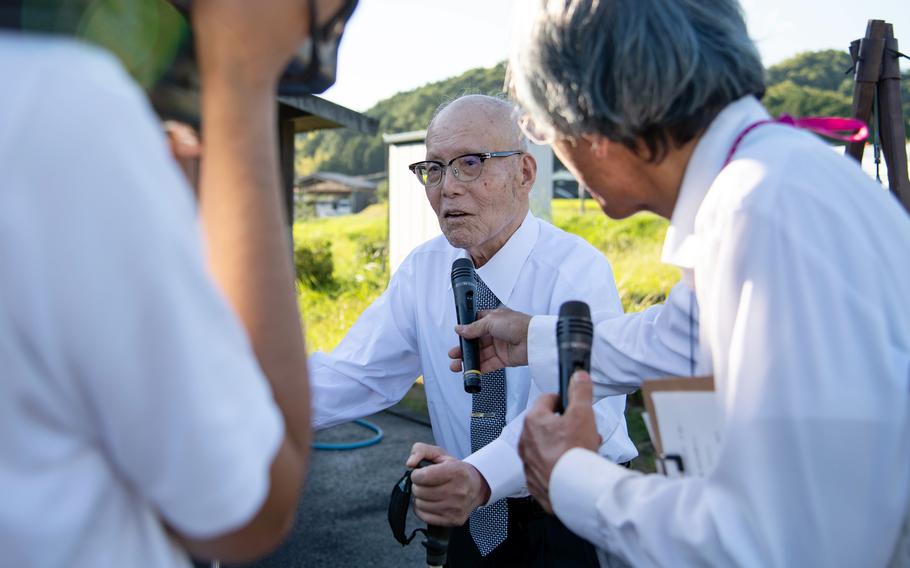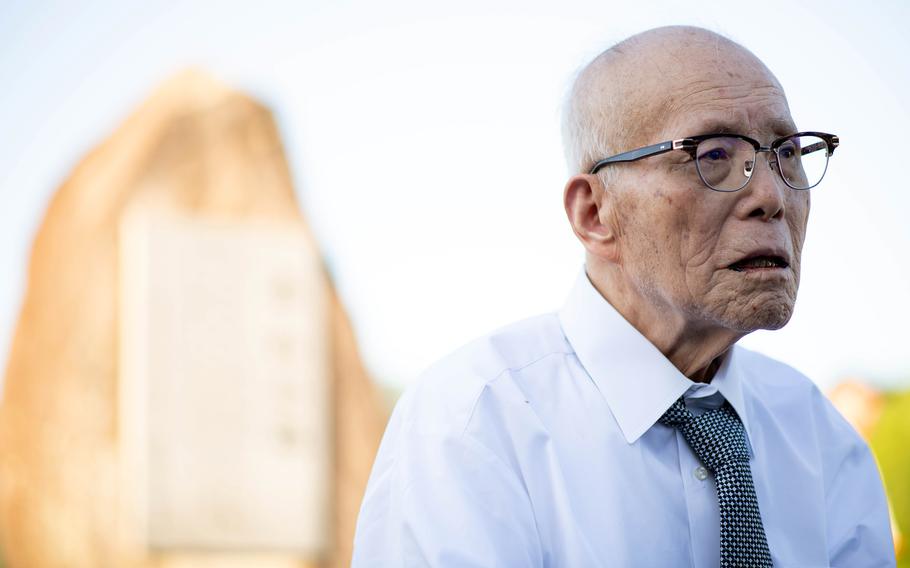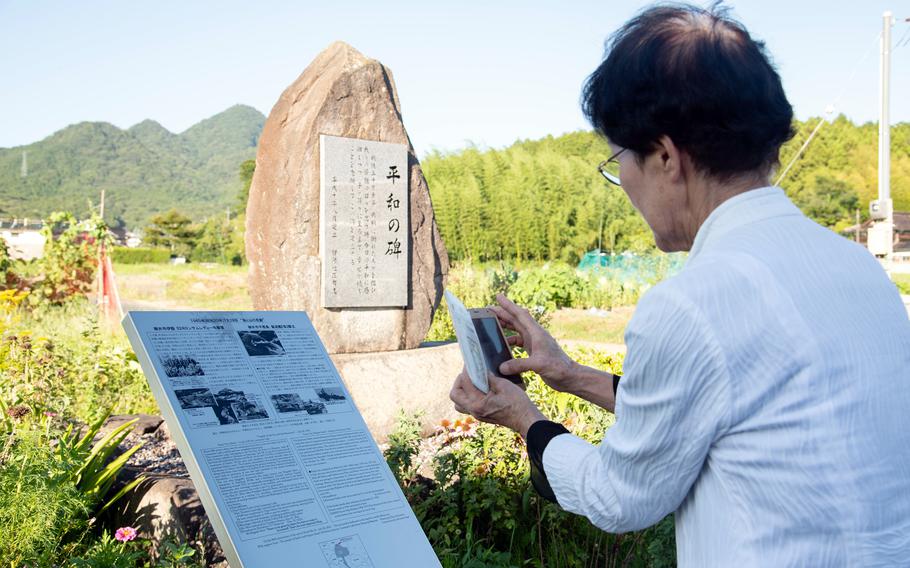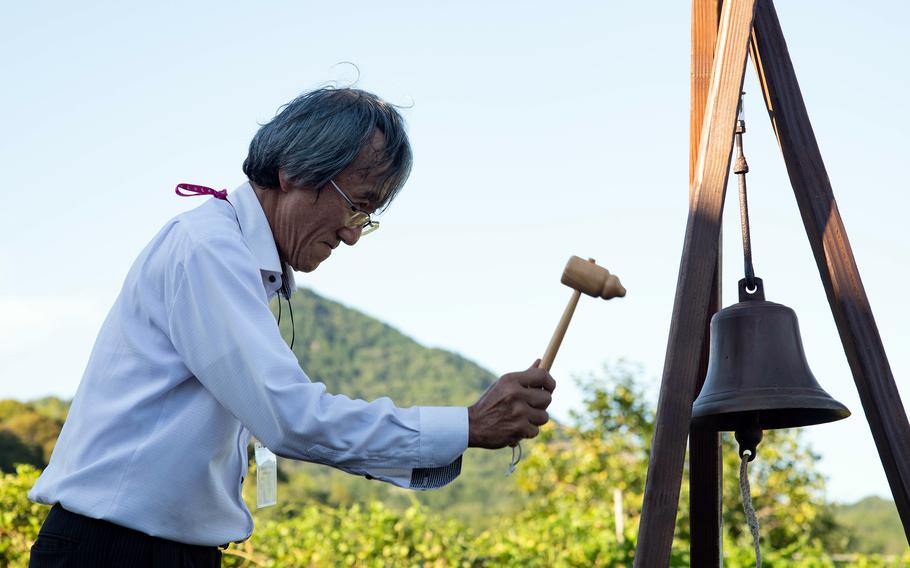Asia-Pacific
Hiroshima survivor helps mark 80 years since Lonesome Lady bomber tragedy
Stars and Stripes July 30, 2025

Hiroshima atomic bombing survivor Shigeaki Mori, 88, speaks to reporters on the 80th anniversary of the Lonesome Lady B-24 bomber crash in Ikachi, Japan, on July 28, 2025. (Janiqua Robinson/Stars and Stripes)
IKACHI, Japan — A plaque unveiled recently in this rural town near Marine Corps Air Station Iwakuni commemorates the nine-member crew of the Lonesome Lady, a B-24 Liberator that crashed on July 28, 1945.
The marker — set apart from a stone memorial erected more than a decade ago — provides additional context about the bomber’s ill-fated mission and those aboard. The Lonesome Lady was shot down by Japanese anti-aircraft fire during a bombing run near the end of World War II.
The plaque also references the Nashi, a Japanese naval vessel sunk by American forces in the Seto Inland Sea, south of Yamaguchi prefecture.
Amateur historian Shigeaki Mori, 88, speaking Monday at a ceremony marking the crash’s 80th anniversary, emphasized the importance of peace amid current global tensions.

Hiroshima atomic bombing survivor Shigeaki Mori, 88, speaks on the 80th anniversary of the Lonesome Lady B-24 bomber crash in Ikachi, Japan, on July 28, 2025. (Janiqua Robinson/Stars and Stripes)
Mori — a survivor of the Hiroshima atomic bombing on Aug. 6, 1945 — has spent nearly five decades researching American prisoners of war who died in that attack, which also killed many of the Lonesome Lady’s crew members.
“A great tragedy occurred on both the Japanese and the United States side,” he told approximately 30 people gathered for Monday’s ceremony. “I hope that this will never happen again.”
The plaque was installed with support from local residents of Ikachi and Heigun Island, the Lonesome Lady Peace Memorial Museum, and others, according to the marker. The small, private museum houses a painting of Mori’s impromptu embrace of former President Barack Obama during a ceremony at Peace Memorial Park on May 27, 2016.
Mori said the Lonesome Lady had been ordered to attack the battleship Haruna, anchored in Kure Harbor. U.S. Army Air Forces 2nd Lt. Thomas Cartwright piloted to the bomber from Yontan Airfield on Okinawa, according to Pacific Wrecks, a POW-MIA documentation website.

Kayoko Mori, wife of Hiroshima bombing survivor Shigeaki Mori, photographs a plaque displaying information about the Lonesome Lady B-24 bomber crash in Ikachi, Japan, on Jan. 28, 2025. The marker was unveiled on the crash’s 80th anniversary. (Janiqua Robinson/Stars and Stripes)
After the Lonesome Lady was hit, Cartwright ordered the crew to bail out. He was the last to parachute from the bomber and landed near the crash site, which is surrounded by hilly and sprawling farmland, where he was captured and sent to a prison camp.
“The pilot was brought to Hiroshima where he found his six subordinates, but he could not find two of them,” Mori said.
Navigator 2nd Lt. Roy Pedersen died after his parachute failed to open; his body was discovered in 1947, still suspended in a tree, according to a Defense Department report titled The Hiroshima POWs.
Tail gunner Staff Sgt. William Abel was captured by the Imperial Japanese Navy and sent to Ofuna Prison Camp near Tokyo. Only he and Cartwright survived the war, the report said.

A bell sounds on the 80th anniversary of the Lonesome Lady B-24 Liberator bomber crash in Ikachi, Japan, on July 28, 2025. (Janiqua Robinson/Stars and Stripes)
The remaining six airmen died when the B-29 Superfortress Enola Gay dropped the first atomic bomb used in warfare, Little Boy, on Hiroshima.
“We have learned that war brings hatred, suffering, destruction and waste and that peace can bring happiness and prosperity,” Cartwright said during a trip to Ikachi in 1998, according to Mori.
Mori, who was 8 years old when Hiroshima was bombed, recalled the moment he saw the flash and heard the blast. He later learned his entire school had perished. He remembered the auditorium filled with wounded and the schoolyard strewn with corpses.
“To this day, I am amazed at how lucky I was,” he said at the 2015 unveiling of the Lonesome Lady monument. “I was exposed to a huge amount of radiation, and I even drank water that was contaminated with radiation. Also, I was exposed to black rains.”